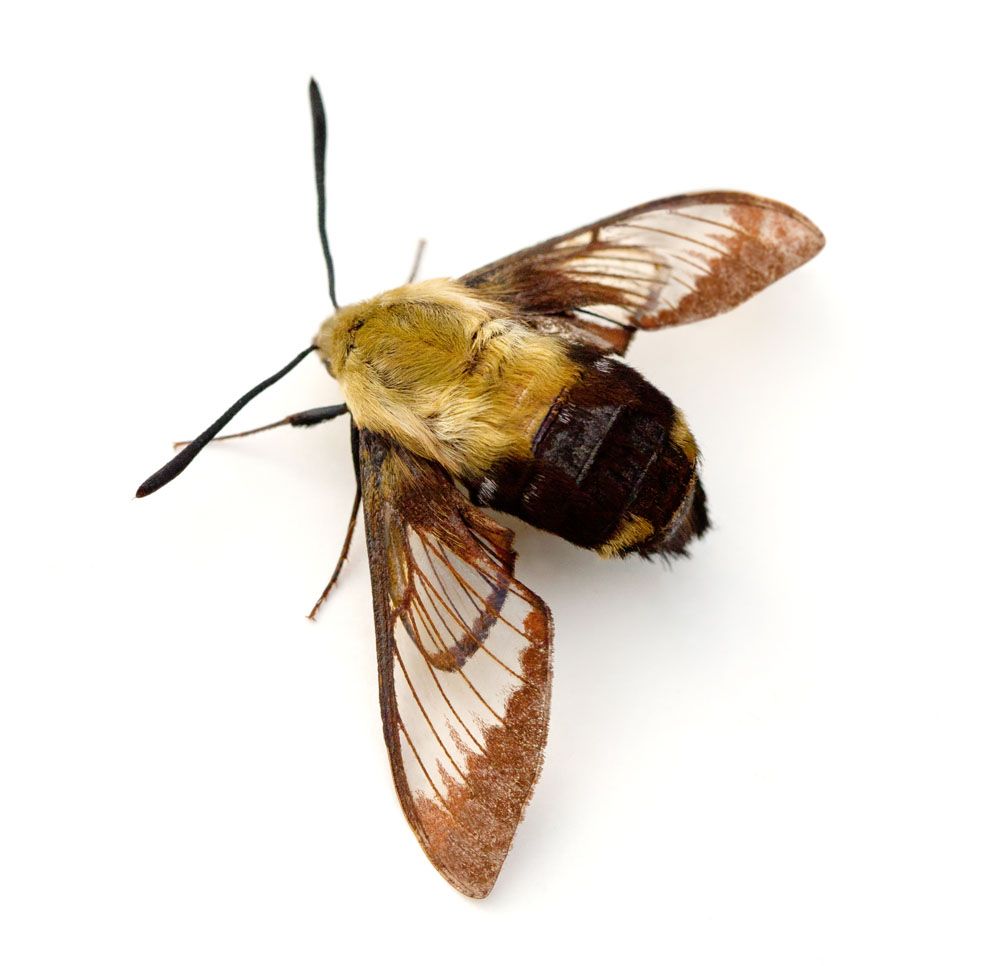
Snowberry Clearwing – Hemaris diffinis
Snowberry Clearwing – Hemaris diffinis
Common Name: Snowberry Clearwing
Latin Name: Hemaris diffinis
Appearance:
The Snowberry Clearwing, often known as a hummingbird moth, has specific characteristics:
The adult Snowberry Clearwing has transparent wings with a little reddish hue, like a hummingbird in flight. It has a thick body and a hairy look, with olive-green and brown colouration. It has 1.5 to 2 inches of wingspan. The caterpillar is green with white lateral stripes and has a tiny hornworm-like protrusion at the tail end.
Host Plant:
Snowberry Clearwing caterpillars eat on members of the Caprifoliaceae family, including snowberry (Symphoricarpos spp.), honeysuckle (Lonicera spp.), and coralberry (Symphoricarpos orbiculatus).
Territory:
Snowberry Clearwings are widespread in North America, with a range extending from Canada to Mexico. They can be found in gardens, meadows, forest margins, and suburban areas where their host plants flourish.
Damages caused by Snowberry Clearwing:
The snowberry clearwing caterpillar is not regarded as a potentially dangerous nuisance. Although they may ingest the foliage of their host plants, their presence generally does not significantly affect the overall health of the plants. Adult moths play a crucial role as pollinators and make beneficial contributions to ecosystems.
Life History and Habitat:
Life Cycle:
The Snowberry Clearwing experiences a comprehensive metamorphosis, which comprises the following life stages: egg, larval (caterpillar), pupal, and adult.
- Eggs:Eggs are laid by adult female moths on the foliage of their host plants.
- Larva:Following its hatching from the egg, the caterpillar consumes the host plant. It experiences a number of moults prior to attaining maturation.
- Pupa:The mature caterpillar transforms into a chrysalis during this stage.
- Adult:Following its emergence from the chrysalis, the moth continues its life cycle. Active during the day, adult Snowberry Clearwings are distinguished by their hovering resemblance to hummingbirds as they consume nectar.
